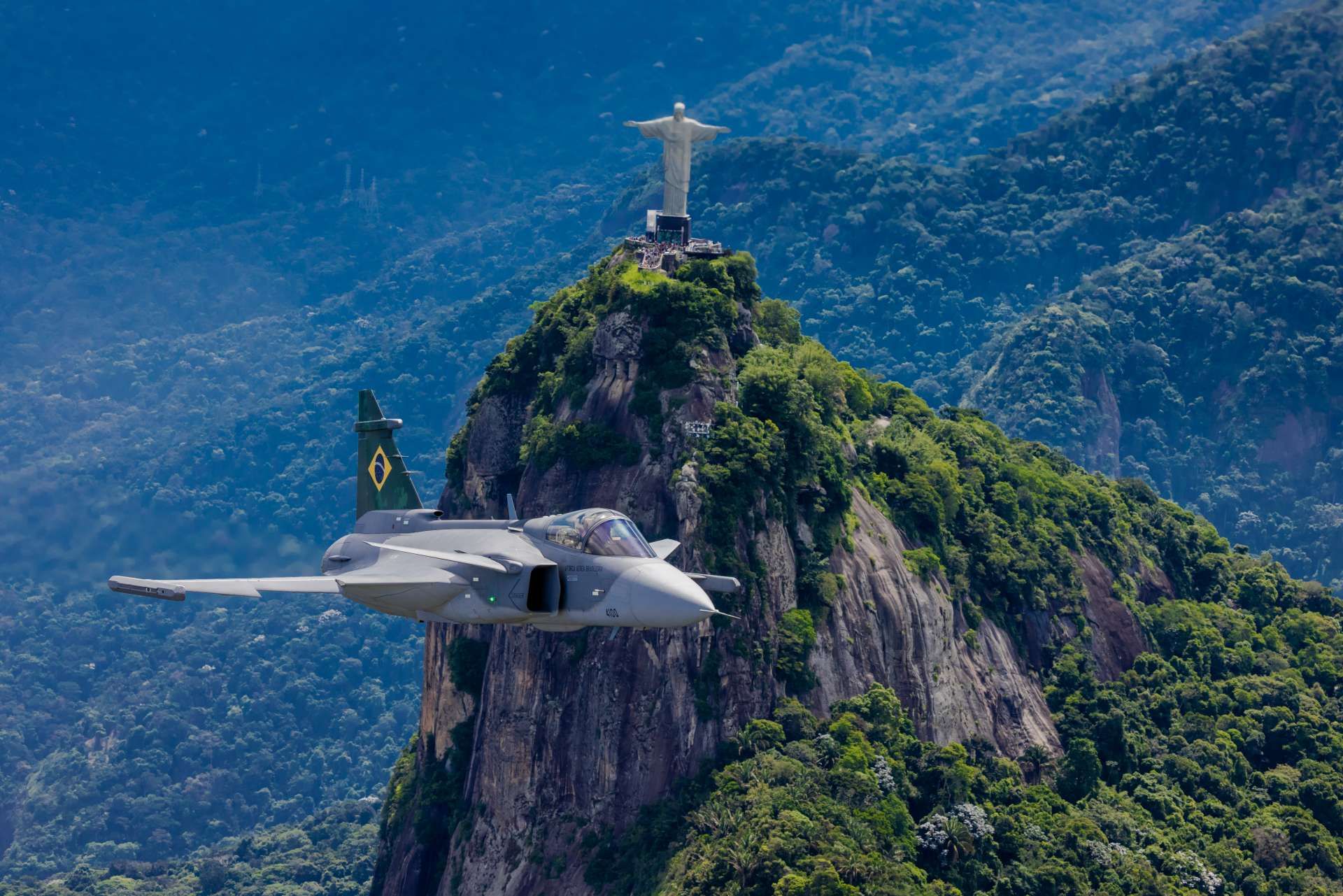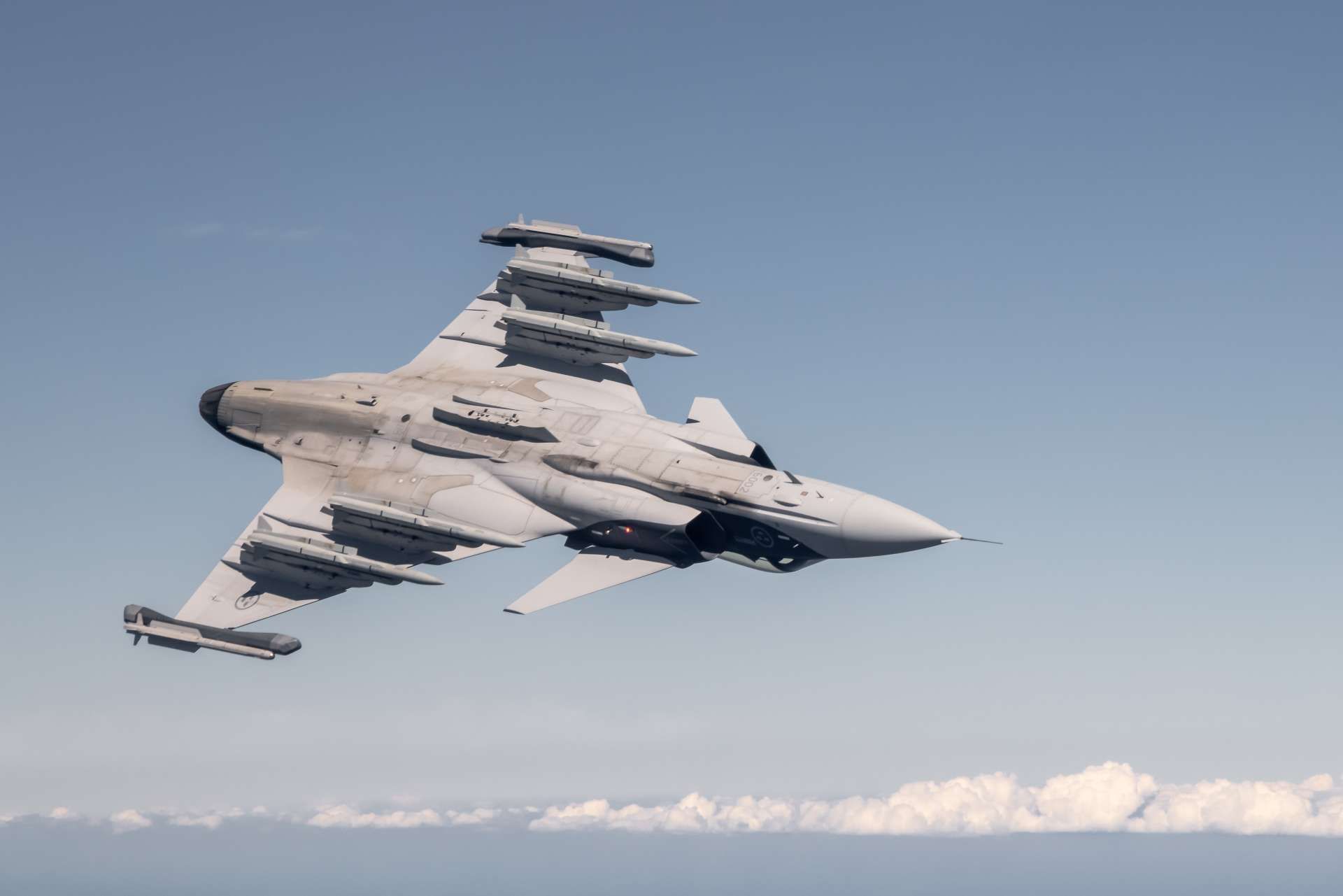Breaking News
Brazilian Air Force receives new Saab F-39 Gripen fighter jet from Sweden.
On September 24, 2024, the Brazilian Air Force (Força Aérea Brasileira - FAB) announced the arrival of another Saab F-39 Gripen aircraft in Brazil, registered as 4108. This aircraft arrived on September 23, completing a journey of approximately 20 days. It was shipped from Norrköping, Sweden, to the port of Navegantes on the Catarinense coast. After its arrival, the aircraft was transferred to Navegantes International Airport, where the necessary technical procedures will be conducted to prepare it for its flight to Anápolis Air Base (BAAN).
Follow Army Recognition on Google News at this link

After its arrival, the Saab F-39 Gripen was transferred to Navegantes International Airport, where the necessary technical procedures will be conducted to prepare it for its flight to Anápolis Air Base. (Picture source: Força Aérea Brasileira)
The F-39E Gripen’s arrival is part of the FAB’s modernization program, aimed at enhancing Brazil’s air combat capabilities. The transition comes after the prolonged use of older fighter jets, particularly the American-made Northrop F-5, which became the primary fighter jet following the retirement of the Mirage 2000 in late 2013. The Brazilian Air Force (Força Aérea Brasileira - FAB) acquired a total of 79 F-5s over the years, with the initial purchase consisting of 42 new units in 1973 (including 6 two-seat B training units and 36 one-seat E units). In 1988, another 26 new units were acquired (comprising 4 B training units and 22 E units), followed by the acquisition of 11 used units from Jordan in 2000, as the production of F-5s had ended in the United States in 1987. Currently, approximately 50 of these jets remain in active service.
To ensure the continued service of the F-5 fleet, a modernization program began in 2005 and was completed in October 2020. Embraer managed the modernization, upgrading the F-5s with new avionics systems, multifunctional displays, Italian Grifo F multimode radars, electronic countermeasures, and compatibility with modern missiles and laser-guided bombs. The modernization project, known as the FX project, resulted in the F-5s being designated as F-5EM/F-5FM variants, with contributions from Israeli companies ATL and Elbit Systems. The final modernized F-5M fighter was delivered to the FAB on October 14, 2020, concluding the 15-year program and resulting in a total of 49 fighters being upgraded.
The shift towards the Gripen began in 2013 with the Brazilian Gripen Program, when Saab was selected for the F-X2 contract to replace the aging fleet. In October 2014, a contract was signed with the Brazilian government for the development and production of 36 Gripen NG aircraft, consisting of 28 single-seat F-39Es and eight dual-seat F-39Fs, along with two flight simulators, with a total value of SEK38.9 billion (USD4.25 billion).

The shift towards the Gripen began in 2013 with the Brazilian Gripen Program, when Saab was selected for the F-X2 contract to replace the aging fleet of 79 American-made F-5s. (Picture source: Saab)
As the Brazilian Air Force (Força Aérea Brasileira - FAB) operates both F-5 and Gripen-E fighters, Brazilian Air Force Commander, Lieutenant Brigadier Marcelo Kanitz Damasceno, emphasized that Brazilian regulations require the fleet to consist of at least two but not more than three fighter types, suggesting the Indian Tejas Light Combat Aircraft (LCA) could serve as the second or third type alongside the Gripen-E once the F-5 is phased out. This consideration was confirmed in a meeting with Indian defense officials, including Air Chief Marshal V.R. Chaudhari and Chief of Army Staff General Upendra Dwivedi, on September 11, 2024.
On November 24, 2021, the FAB formally received its first four series-production Saab F-39Es, Brazil's designation for the single-seat Gripen E variant. These jets were accepted at the Saab Aeronautics plant in Linköping, Sweden, and later shipped to Brazil to join the Jaguar Squadron at Wing 2 in Anápolis, Goiás. These fighters joined a single-seat F-39E Flight Test Instrumentation (FTI) aircraft that had been delivered to Brazil on September 11, 2019, for testing in both Sweden and Brazil. The entire delivery schedule for the Gripen fleet is structured in multiple phases, with the last two fighters expected to be delivered by 2026.
The Gripen program includes Embraer as the main Brazilian partner, receiving about 60 to 70% of the technology transfer and offset packages. The FAB currently operates nine F-39Es and has another 27 Gripen E/Fs on order, scheduled for delivery from 2019 to 2026. This will create a total fleet of 36 F-39E/Fs, operated by the 'Jaguar' Squadron of the 1st Air Defense Group.

The Brazilian Air Force currently operates nine F-39Es and has another 27 Gripen E/Fs on order, scheduled for delivery from 2019 to 2026. This will create a total fleet of 36 F-39E/Fs, operated by the 'Jaguar' Squadron of the 1st Air Defense Group. (Picture source: Saab)
The Saab JAS 39 Gripen E, an enhanced version of the original Gripen series developed by Saab AB, originated from a program started in the late 1970s to replace the Swedish Air Force’s Draken and Viggen aircraft. The Gripen, designed as a multirole fighter, had its first flight in 1988 and entered service in 1996. The Gripen E, also referred to as Gripen NG (Next Generation), represents a significant redesign, with deliveries starting in 2019.
The Gripen E features a General Electric F414-GE-39E turbofan engine, producing a maximum thrust of 98 kN with an afterburner. The aircraft can achieve speeds of Mach 2 (approximately 2,100 km/h) at an altitude of 15,240 m and sustain supercruise at Mach 1.25 without an afterburner. It has a combat range of approximately 1,500 km in an air-to-ground configuration and a ferry range of up to 4,000 km with external fuel tanks, operating within a service ceiling of 16,000 m and a g-force range of +9/-3.
Equipped with ten hardpoints, the Gripen E can carry a payload of up to 7,200 kg, including a variety of armaments such as a 27 mm Mauser BK-27 revolver cannon (120 rounds on single-seat models), air-to-air missiles (IRIS-T, AIM-9 Sidewinder, MBDA Meteor), and air-to-surface weapons (AGM-65 Maverick, RBS-15F anti-ship missile). It can also carry guided bombs like the GBU-12 Paveway II and GBU-39 Small Diameter Bomb, and has provisions for electronic countermeasures, reconnaissance pods, and targeting pods.

Equipped with ten hardpoints, the Gripen E can carry a payload of up to 7,200 kg, including a variety of air-to-air missiles, such as the IRIS-T and the Meteor. (Picture source: Saab)


























